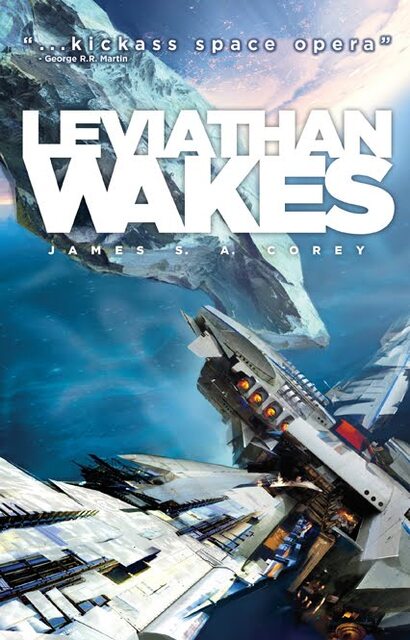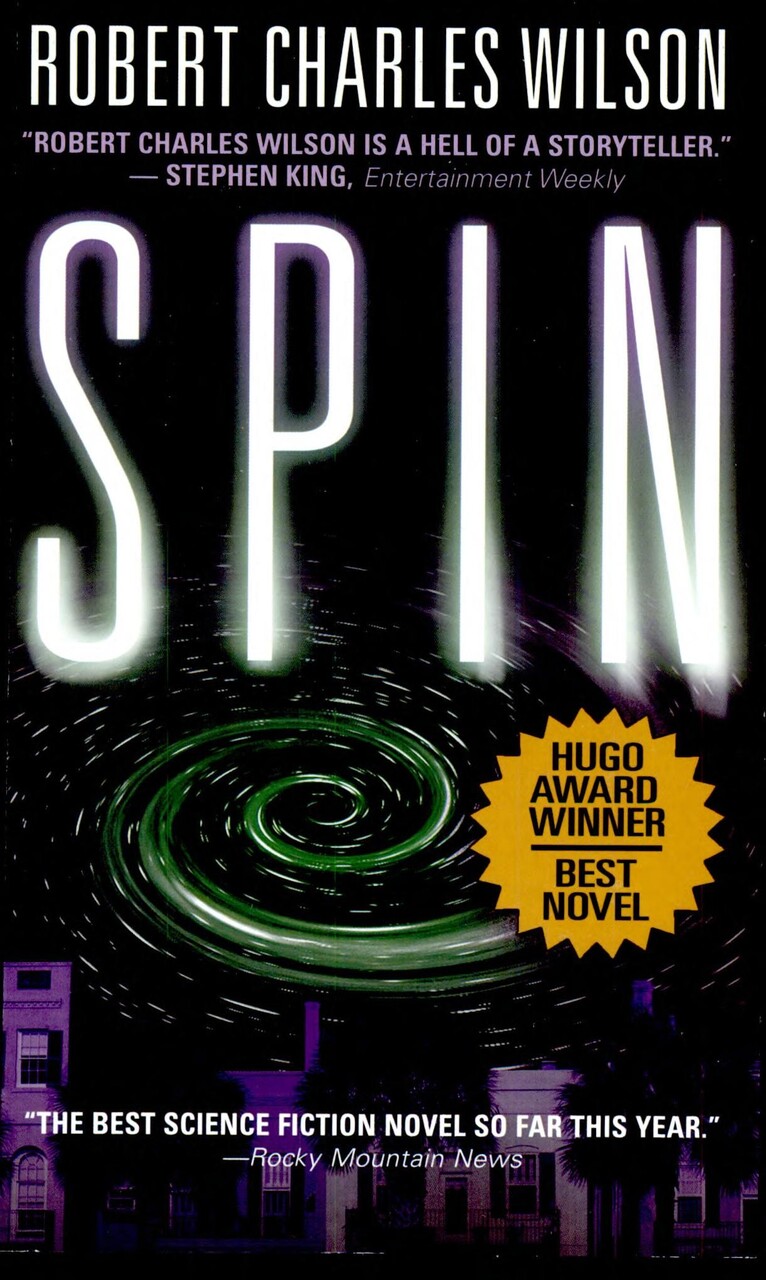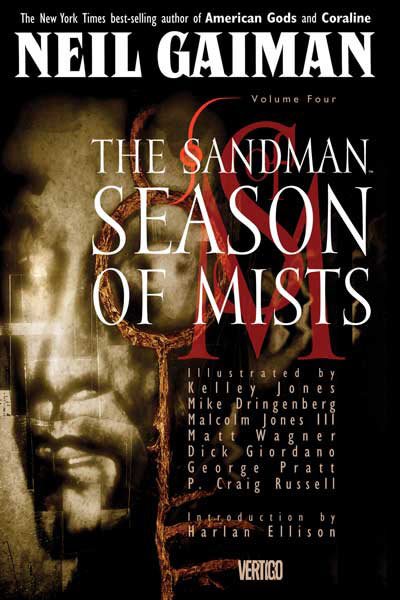- (https://b-ark.ca/ksKKwg)
I’m riding in the 2025 Enbridge Tour Alberta for Cancer, raising money for the Alberta Cancer Foundation, and have so far raised $2,744, exceeding my $2,500 goal and surpassing my 2024 effort!
Help me by donating here
And remember, by donating you earn a chance to win a pair of hand knitted socks!
Review: Leviathan Wakes
(https://b-ark.ca/u2ACAS)Review of Leviathan Wakes
<span>(<a href="https://en.wikipedia.org/wiki/The_Expanse_(novel_series)">The Expanse</a> #1.0)</span>by
(9780316129084)★★★★ </span>

Humanity has colonized the solar system - Mars, the Moon, the Asteroid Belt and beyond - but the stars are still out of our reach.
Jim Holden is XO of an ice miner making runs from the rings of Saturn to the mining stations of the Belt. When he and his crew stumble upon a derelict ship, the Scopuli, they find themselves in possession of a secret they never wanted. A secret that someone is willing to kill for - and kill on a scale unfathomable to Jim and his crew. War is brewing in the system unless he can find out who left the ship and why.
Detective Miller is looking for a girl. One girl in a system of billions, but her parents have money and money talks. When the trail leads him to the Scopuli and rebel sympathizer Holden, he realizes that this girl may be the key to everything.
Holden and Miller must thread the needle between the Earth government, the Outer Planet revolutionaries, and secretive corporations - and the odds are against them. But out in the Belt, the rules are different, and one small ship can change the fate of the universe.
I wanna give half stars! This book didn’t totally blow my mind (like, say, The Road), but it was a really solid space opera. 4.5.
Review: Spin

Spin is Robert Charles Wilson's Hugo Award-winning masterpiece―a stunning combination of a galactic "what if" and a small-scale, very human story.
One night in October when he was ten years old, Tyler Dupree stood in his back yard and watched the stars go out. They all flared into brilliance at once, then disappeared, replaced by a flat, empty black barrier. He and his best friends, Jason and Diane Lawton, had seen what became known as the Big Blackout. It would shape their lives.
The effect is worldwide. The sun is now a featureless disk―a heat source, rather than an astronomical object. The moon is gone, but tides remain. Not only have the world's artificial satellites fallen out of orbit, their recovered remains are pitted and aged, as though they'd been in space far longer than their known lifespans. As Tyler, Jason, and Diane grow up, a space probe reveals a bizarre truth: The barrier is artificial, generated by huge alien artifacts. Time is passing faster outside the barrier than inside―more than a hundred million years per year on Earth. At this rate, the death throes of the sun are only about forty years in our future.
Jason, now a promising young scientist, devotes his life to working against this slow-moving apocalypse. Diane throws herself into hedonism, marrying a sinister cult leader who's forged a new religion out of the fears of the masses.
Earth sends terraforming machines to Mars to let the onrush of time do its work, turning the planet green. Next they send humans…and immediately get back an emissary with thousands of years of stories to tell about the settling of Mars. Then Earth's probes reveal that an identical barrier has appeared around Mars. Jason, desperate, seeds near space with self-replicating machines that will scatter copies of themselves outward from the sun―and report back on what they find.
Life on Earth is about to get much, much stranger.
I think of Greg Bear as the kind of writer who’s willing to take a big idea with big consequences, and then actually explore those consequences. Mr. Wilson does the same, here, in Spin, and I think executes it quite well. The mystery is well delivered, the narrative well paced, the characters interesting and fairly realistic, and the examination of the consequences of his idea, both on the individual characters as well as the earth (and universe) at large, is fascinating and compelling. Definitely worth a read.
Review: A Game of You
(https://b-ark.ca/oKQaAS)Review of A Game of You
<span>(<a href="https://en.wikipedia.org/wiki/The_Sandman_(Vertigo)">The Sandman</a> #5.0)</span>by
(9781401230432)★★★★★ </span>

Take an apartment house, add in a drag queen, a lesbian couple, some talking animals, a talking severed head, a confused heroine and the deadly Cuckoo. Stir vigorously with a hurricane and Morpheus himself and you get this fifth installment of the SANDMAN series. This story stars Barbie, who first makes an appearance in THE DOLL’S HOUSE and now finds herself a princess in a vivid dreamworld.
This is probably my favourite volume, if only because the storyline is so emotional and personal. Here we have a story which fundamentally ties together as much because of the connection between the characters themselves as because of the overall storytelling. And the end… yeah, worth the price of admission. Bittersweet and beautiful.
Review: Season of Mists
(https://b-ark.ca/6IsuYY)Review of Season of Mists
<span>(<a href="https://en.wikipedia.org/wiki/The_Sandman_(Vertigo)">The Sandman</a> #4.0)</span>by
(9781401230425)★★★★ </span>

Ten thousand years ago, Morpheus condemned a woman who loved him to Hell. Now the other members of his immortal family, The Endless, have convinced the Dream King that this was an injustice. To make it right, Morpheus must return to Hell to rescue his banished love — and Hell’s ruler, the fallen angel Lucifer, has already sworn to destroy him.
In my mind this is the cycle where Gaiman really starts to enrich the mythos he’s created, pulling in gods and myths from around the world into an intriguing storyline that amounts to a supernatural political thriller. About my only complaint, here, is that, much like The Dollhouse, the ending comes way too easily, in this case with a literal deus ex machina.